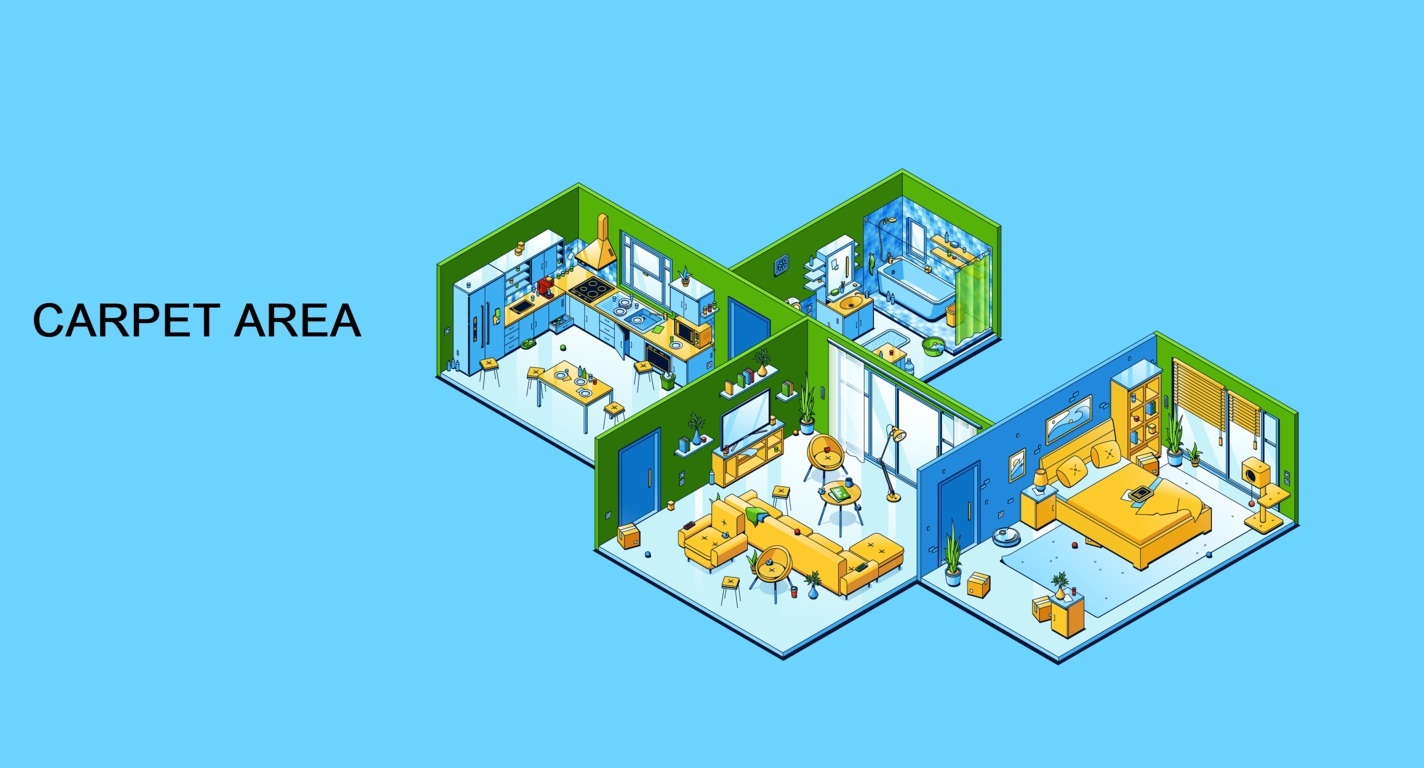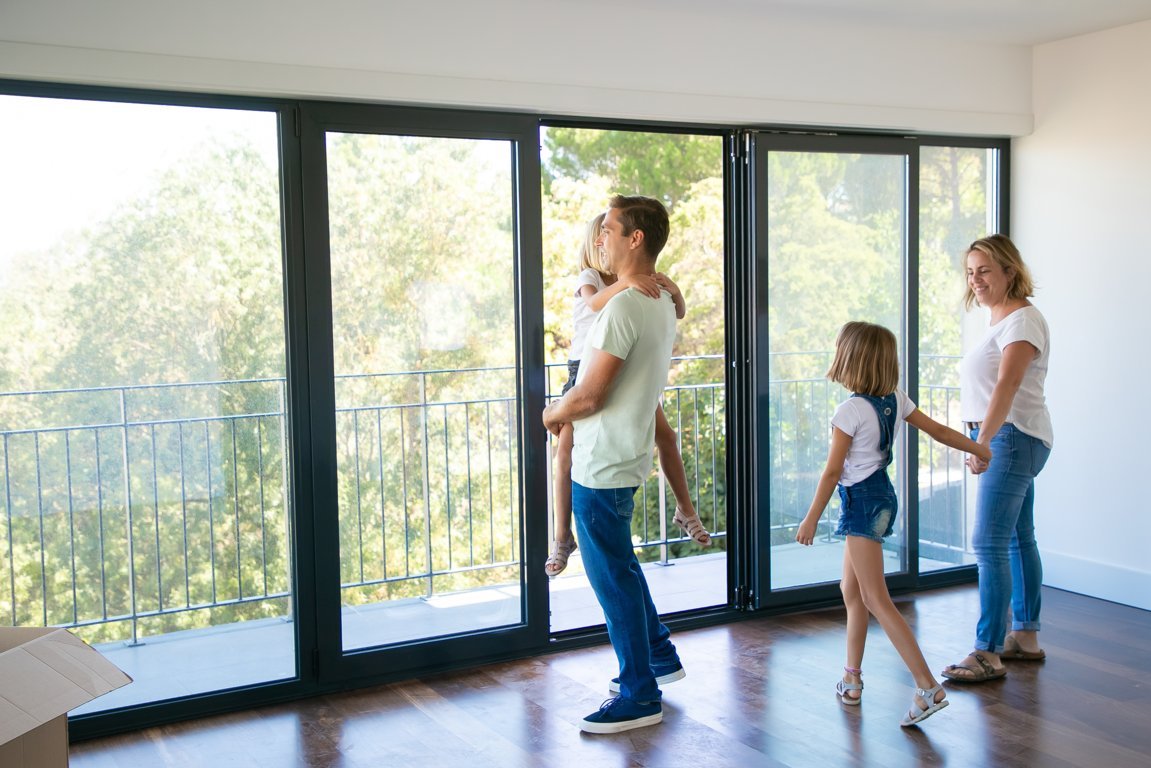Be it buying a new house or exploring rental properties or premium luxury apartments in Tellapur, the chances are very rare that the term “Carpet Area” wouldn’t show up. From real-estate websites to property apps to the brokers and builders, almost all of them never cease to mention the Carpet Area while explaining the specifications of the property to you. This term, usually followed by two other terms under the same category often ignites curiosity in people’s minds as to what exactly is their meaning, and what makes them different from each other.
Many people might be already aware of the meanings of the terms Carpet area, Built-up area, and Super Built-up area, but there is still an air of confusion around them for some people. So let’s dive into the meaning straightaway and settle down this air once and for all.
Carpet Area
In the simplest of words, the pretty self-explanatory term Carpet Area broadly means the area of the property that can be covered by a carpet or the net usable area of the property. Let’s understand it precisely now.
According to the Real Estate Regulatory Authority (RERA), the net usable area of an apartment which excludes the area occupied by service shafts, exclusive balcony, exclusive terrace, and external walls, is known as Carpet Area. So the area between the internal walls of a property, which includes the inner partition walls, all the rooms inside the property, kitchen, toilet(s), bathroom(s), and cupboard spaces, add up to make the carpet area.
The areas of the property which are not taken into account while calculating the carpet area are external walls, service shafts, balcony, utility area, open terrace area, lobby, lift area, staircase, verandah, and clubhouse.
Carpet area is a useful metric to consider while purchasing any premium luxury apartments. For the people who purchase an under-construction property, there can be a difference between the promised carpet area and the actual carpet area after the property is ready. If the actual carpet area is lesser than the promised carpet area, the customer will get a certain amount as a refund. The paid amount is charged accordingly as per the increase or decrease in the carpet area of the property post-construction. According to RERA, the increase in the carpet area of a property cannot exceed 3% of the promised Carpet area.
Built-up area
The built-up area of a property is slightly more than the carpet area. While the measurement of the carpet area starts from the inner perimeter of the property walls, the built-up area is measured from the external perimeter of the walls of a property. To put a clear picture, the built-up area is calculated by adding up the carpet area, the area occupied by the external walls of the property, balcony, terrace, and flower beds along with other unusable areas within the property. The areas not included in the built-up area are the areas occupied by lift, lobby, staircase, swimming pool, clubhouse, etc.
Usually, the built-up area of a property is nearly 10-15 percent more than the Carpet area.
Super Built-up area
The Super Built-up area of a property is the net saleable area of that property. To explain it better, the super built-up area includes the carpet area of the property along with the areas occupied by balconies, terraces, walls, and common constructions.
While talking about the Super Built-up area of a property, the term ‘Loading Factor’ is often used in the discussion and therefore it is essential to know its meaning as well. In the simplest of terms, the Loading factor is the difference between the super built-up area of the property and the carpet area of the property. When a builder constructs a property with shared facilities that occupy areas like swimming pools, clubhouses, etc., the loading factor comes into the picture.
While calculating the loading factor, the builder takes into account the constructed spaces that are not allocated to you exclusively. These spaces include the lifts, lobbies, staircases, clubhouse, pipe ducts, service shafts, etc. For example, a loading factor of 1.15 will mean that the builder has added 15% to your carpet area for calculating the cost. The loading factor of a property with low amenities is generally smaller.
Therefore, taking the loading factor into account, the super built-up area includes proportionate shares of common areas like lobby, clubhouse, service shafts, and other such shared facilities for premium apartments in tellapur by Muppa Melody. The super built-up area of a property is generally 20 to 40 percent more than its carpet area.
Do premium luxury apartments in Tellapur have built-up area or super carpet area
Conclusively, the above three terms are very often used whenever there is a sale/purchase of any property. But the key thing to remember is that as per RERA, the price negotiations of a property can be done only on the basis of the carpet area of the property. In the case of the properties inside gated communities etc. built by the builders, the loading factor might be taken into account but generally, a loading factor of 1.30 is considered to be sufficient.